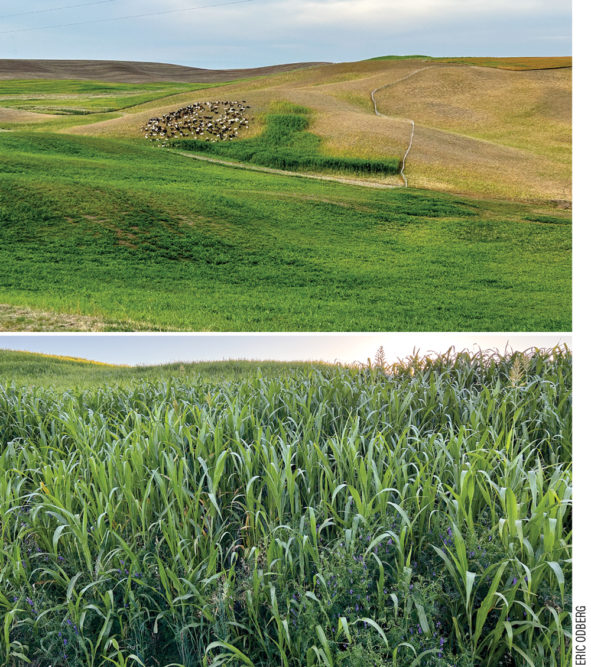No-Till Farmer
Get full access NOW to the most comprehensive, powerful and easy-to-use online resource for no-tillage practices. Just one good idea will pay for your subscription hundreds of times over.

FOOD SOURCE. Goats graze cover crops at Eric Odberg’s farm in the Palouse region of Idaho. Odberg’s first year using cover crops proved to be helpful in combatting drought. Source: Eric Odberg
In 2023, many growers faced obstacles related to drought across much of the U.S. and even other parts of the world. Cover crops have often served as a tool for overcoming drought while also improving soil health, but proper management is key. No-Till Farmer surveyed growers about how cover crops affected cash crops during the 2023 drought. Here are some responses from growers.
This was my first year diving into regenerative agriculture on the Palouse. You don’t see that or much cover crops here for that matter. I have 800 goats on 195 acres and a full season cover crop. They have both done extremely well on a fairly dry year for us. I plan on seeding canola on it next spring. I think I will see a lot of organic nitrogen from it, but we will see.
—Eric Odberg, Odberg Farms, Genesee, Idaho
My farm is 20 miles west of Dalhart, Texas. From 2020-23, we experienced 3 years where the average rainfall at our farm was less than half of our annual average of 16-17 inches. Even then, many of those precipitation events were not effective. This is due to the dry, arid environment where rainfall of less than ½ inch frequently doesn’t get a chance to be stored in soil water before it evaporates.
We have to irrigate to raise crops, even cover crops. Most of the time, it is not economical to pay for irrigation expenses to grow cover crops. The exception is when residue has been…